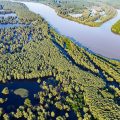When Rivers Rebelled: The Worst Floods in Human History
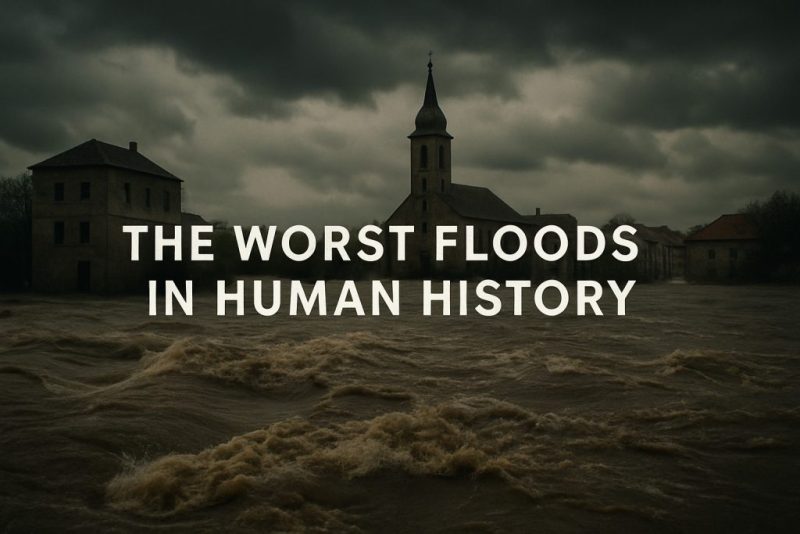
When rivers rise in fury, they don’t just flood cities — they erase civilizations. Discover history’s deadliest and most haunting floods.
Since the dawn of civilization, rivers have been lifelines and destroyers alike. They carve the land, cradle cities, and nourish fields, but when angered — by nature, by neglect, or by human folly — they rise without mercy.
Throughout history, river floods have not just taken lives; they have erased worlds, rewritten borders, and etched terror into the collective memory of humankind.
These are the most devastating river floods ever recorded — moments when the waters swallowed everything.
The 1931 China Floods: A Summer That Drowned Millions
In the long summer of 1931, China faced a calamity beyond imagining. For months, heavy rains and snowmelt overwhelmed the great rivers — the Yangtze, Huai, and Yellow — until they could contain their fury no longer. The rivers burst their banks with an ancient rage, sending walls of water sweeping across towns, farmlands, and cities. It is said that the floodwaters covered an area the size of England and half of France combined.
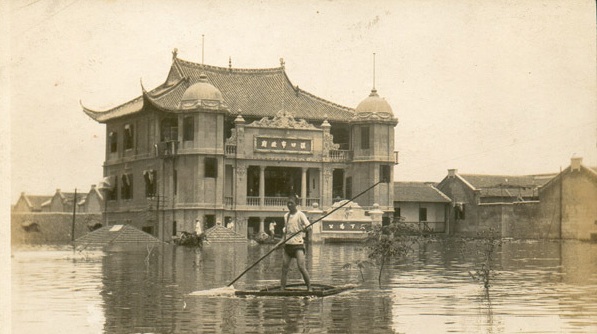
In the aftermath, disease stalked the land, famine spread like wildfire, and the rivers, once worshipped and depended upon, became specters of death. Somewhere between one and four million souls were lost — a staggering testament to the fragile thread binding humanity to the natural world.
The Yellow River Floods: China’s Sorrow Unleashed
The Yellow River, known ominously as “China’s Sorrow,” has flooded with cruel regularity, often triggered by the river’s own nature: a slow accumulation of silt, raising its bed higher and higher above the surrounding countryside until the inevitable breach. In 1887, after heavy rains, the dikes finally surrendered. Between 900,000 and two million people perished, as the water cascaded outward, a living tide that drowned entire counties in mud and ruin.

In 1938, amidst the flames of the Second Sino-Japanese War, tragedy repeated itself — but this time, it was human hands that unleashed the deluge. In a desperate wartime tactic, Chinese troops blew up the levees at Huayuankou. The Yellow River obeyed no sides in war; it annihilated enemy and innocent alike. Hundreds of thousands died, and millions more were displaced, their homes transformed into a landscape of desolation.
The Johnstown Flood of 1889: A Town Erased in Minutes
In the spring of 1889, after relentless rains battered Pennsylvania, the neglected South Fork Dam above Johnstown finally gave way. With a roar heard for miles, the dam surrendered, and a monstrous wave surged down the valley at terrifying speed. Entire neighborhoods were ripped from the earth; locomotives were hurled into houses; bridges vanished in seconds.
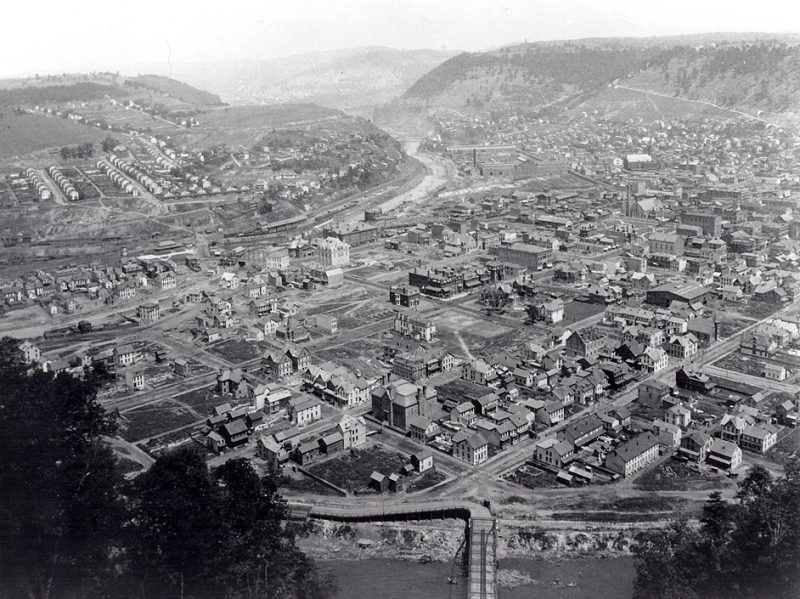
More than 2,200 lives were lost in just minutes. Survivors spoke of a debris-choked wall of water behaving like a sentient beast, consuming all in its path. America was left stunned by the scale of the devastation, and questions of negligence and responsibility would haunt the nation’s memory for decades.
The Great Mississippi Flood of 1927: A Deluge That Changed a Nation
In 1927, the mighty Mississippi River, swollen by months of rain and snowmelt from across the Midwest, unleashed its fury. Levees crumbled like sandcastles, and over 27,000 square miles of land — an area larger than Ireland — vanished beneath a slow, relentless tide.
It was not a sudden catastrophe but a drawn-out agony. Towns vanished, families scattered, and the thin social fabric of the South was ripped apart. African Americans, in particular, suffered grievously, often forced at gunpoint to labor on the crumbling levees.

The flood not only reshaped the land; it reshaped American history, setting in motion the Great Migration and exposing deep racial divides that would echo through generations.
The Yellow River Flood of 1847: Forgotten Waters of Death
Often overshadowed by its more infamous cousins, the 1847 Yellow River flood was nonetheless a cataclysmic event. After heavy rains battered northern China, the river breached its dikes near Kaifeng, sending deadly floodwaters surging across the fertile plains.
Tens of thousands, possibly over 100,000 people, were killed. Entire villages were swept away like reeds, and the famine and displacement that followed sowed seeds of resentment that would later ignite the bloody Taiping Rebellion.
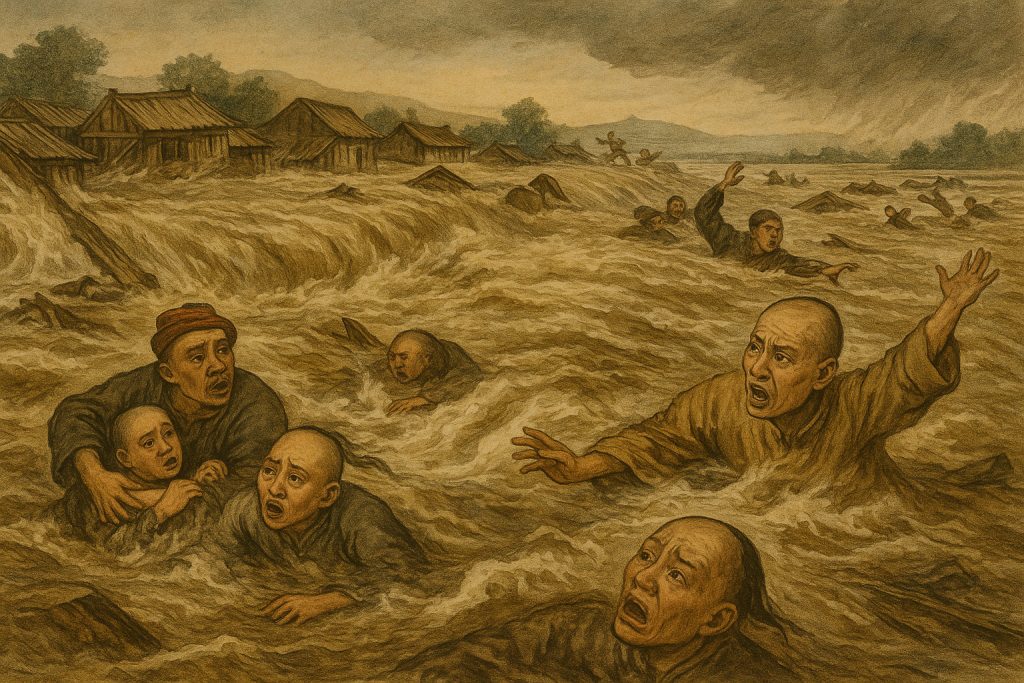
The 1700 Cascadia Floods: When the Earth and Rivers Shifted Together
In 1700, the Pacific Northwest of North America witnessed an event that would live on in the oral histories of indigenous peoples. A massive earthquake along the Cascadia subduction zone triggered not only a devastating tsunami along the coast but also catastrophic inland river flooding.
Rivers like the Columbia swelled and reversed course, drowning coastal and riverine villages. Whole communities vanished overnight, their stories preserved only through legend and scarred landforms. To this day, scientists trace the sudden shifts in river paths and strange sediment layers back to that night when the earth shook, and the rivers rose.
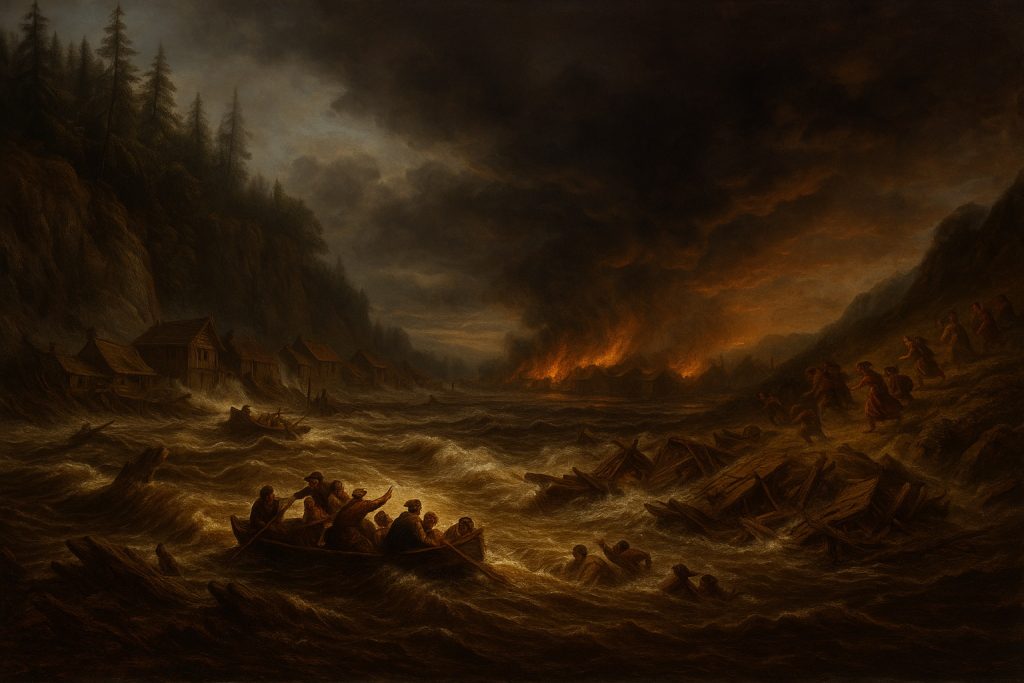
When Rivers Speak, the World Must Listen
From the misty banks of ancient China to the muddy fields of the Mississippi Delta, rivers have shaped the rise and fall of civilizations. They are more than mere bodies of water — they are forces of nature, breathing and moving on a scale we can scarcely comprehend.
When rivers rise in wrath, they do not merely flood cities; they erase them. They wipe clean the histories, ambitions, and empires built upon their banks.
Learn how to prevent floods while preserving nature’s balance
We owe our existence to rivers — and our humility too.
When the waters rise, history itself is swept away.

